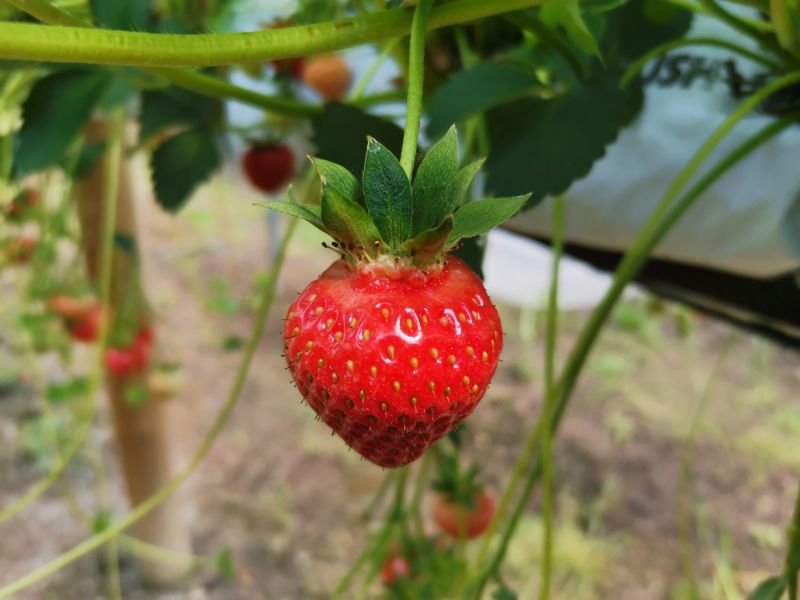Producing safe and high-quality fruits and vegetables is essential not only for consumer health but also for maintaining the integrity of the agricultural industry. As one of the world’s largest producers of fruits and vegetables, the USA places a huge emphasis on regulatory guidelines and standards to ensure the proper growing, harvesting, packing, and holding of fresh produce.
Of course, the agricultural sector is not the only one where stringent legislations and regulations need to be implemented and adhered to by the relevant entities. If we take a look at the online gambling sector, despite being worlds apart in niches, there’s one common denominator: compliance. Mathematician and Data Analyst at NoDepositQuest.com explains the importance of this:
‘Running any sort of company, in whichever industry, requires a great deal of research, data analysis, and obviously, making sure to follow the regulatory framework as per law. And needless to say, the online gambling scene is no different. Actually, restrictions tend to be far stricter since there are many grey areas since rules fluctuate according to US state.’
But back to the world of food production, in this comprehensive guide, we delve into the key compliance requirements for producers, shedding light on the crucial regulations provided by the Food and Drug Administration (FDA) and the U.S. Department of Agriculture (USDA).
Food Safety Modernization Act (FSMA) and the Produce Safety Rule
The Food Safety Modernization Act (FSMA) represents a monumental shift in the approach to food safety, focusing on preventive measures rather than reactive responses to foodborne illnesses. Within the framework of the FSMA, the Produce Safety Rule emerges as a cornerstone, outlining specific requirements that pertain to the safe production of fruits and vegetables. Some of the essential provisions of the Produce Safety Rule include:
- Agricultural Water Standards: Water quality is of paramount importance during the growing and harvesting of produce. The Produce Safety Rule establishes rigorous standards for the quality of agricultural water, ensuring that potential contaminants are minimized. Moreover, regular testing of water sources is mandated to ensure ongoing compliance.
- Biological Soil Amendments: Recognizing the role of soil amendments such as compost and manure in enhancing soil fertility, the FSMA emphasizes the need for their proper use. Guidelines exist to ensure that biological soil amendments are applied to reduce the risk of microbial contamination.
- Worker Health and Hygiene: The human factor plays a crucial role in producing safety. Regulations encompass worker health and hygiene practices to mitigate potential sources of contamination. Adequate training and education are encouraged to ensure that workers understand and adhere to proper hygiene measures.
- Equipment, Tools, and Buildings: Cross-contamination can occur at various points within the production process. The FSMA addresses this concern by providing guidelines for the cleaning and maintenance of equipment, tools, and buildings involved in food production.
- Wildlife and Domesticated Animals: The presence of wildlife and domesticated animals in an agricultural setting can introduce contamination risks to produce. Provisions within the rule outline measures to prevent animal intrusion and minimize the potential for contamination.
- Training and Recordkeeping: Establishing a culture of food safety requires proper training and documentation. The FSMA mandates training programs for personnel involved in produce production and handling, with an emphasis on recordkeeping.
Ensuring Compliance: Best Practices
The journey toward compliance with FDA and USDA regulations demands a proactive and committed approach. Producers can adopt several best practices to ensure that their operations adhere to the highest standards of safety and quality:
- Keep Informed: Regulatory landscapes evolve, necessitating a continuous commitment to staying informed about the latest updates and guidelines issued by the FDA and USDA.
- Implement Good Agricultural Practices (GAPs): Good Agricultural Practices serve as a blueprint for safe and responsible produce production. By adhering to GAPs, producers minimize contamination risks and contribute to safer food production.
- Invest in Training: A well-trained workforce is a cornerstone of compliance. Providing comprehensive training to workers ensures that they are equipped with the knowledge and skills needed to maintain the highest standards of hygiene and safety.
- Document Everything: Robust recordkeeping is essential for demonstrating compliance efforts. Detailed records of practices, training sessions, and testing outcomes provide a comprehensive overview of a producer’s commitment to compliance.
- Collaborate and Share Knowledge: Engaging with industry associations, extension services, and experts fosters a culture of shared knowledge. Collaboration facilitates the exchange of best practices and insights that contribute to improved compliance outcomes.
- Ongoing Improvement: Compliance is a continuous journey rather than a once-off activity. Therefore it is essential to regularly assess processes, gather feedback, and implement improvements based on inspection results and changing regulatory requirements.
Concluding Thoughts
In the complex world of agriculture, adherence to stringent regulations is a non-negotiable commitment. The FDA’s Food Safety Modernization Act and the USDA’s oversight play pivotal roles in ensuring the safety, quality, and integrity of the produce supply chain. By understanding, embracing, and proactively implementing these regulations, producers contribute to a safer food supply, protect consumer health, and bolster the resilience of the agricultural industry. As a united effort between government agencies, producers, and stakeholders, compliance serves as a cornerstone of responsible and sustainable food production in the United States.
